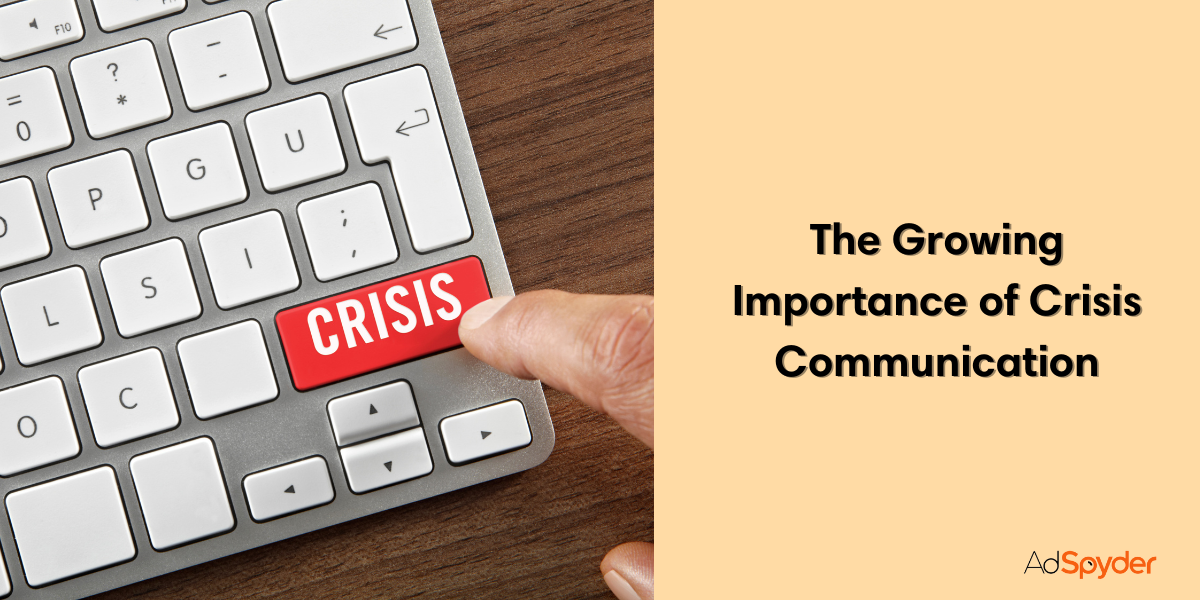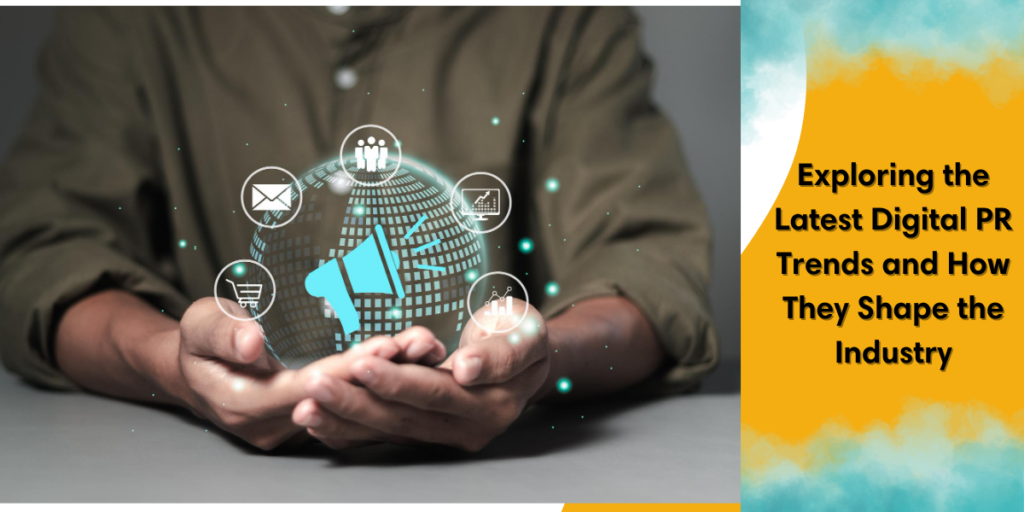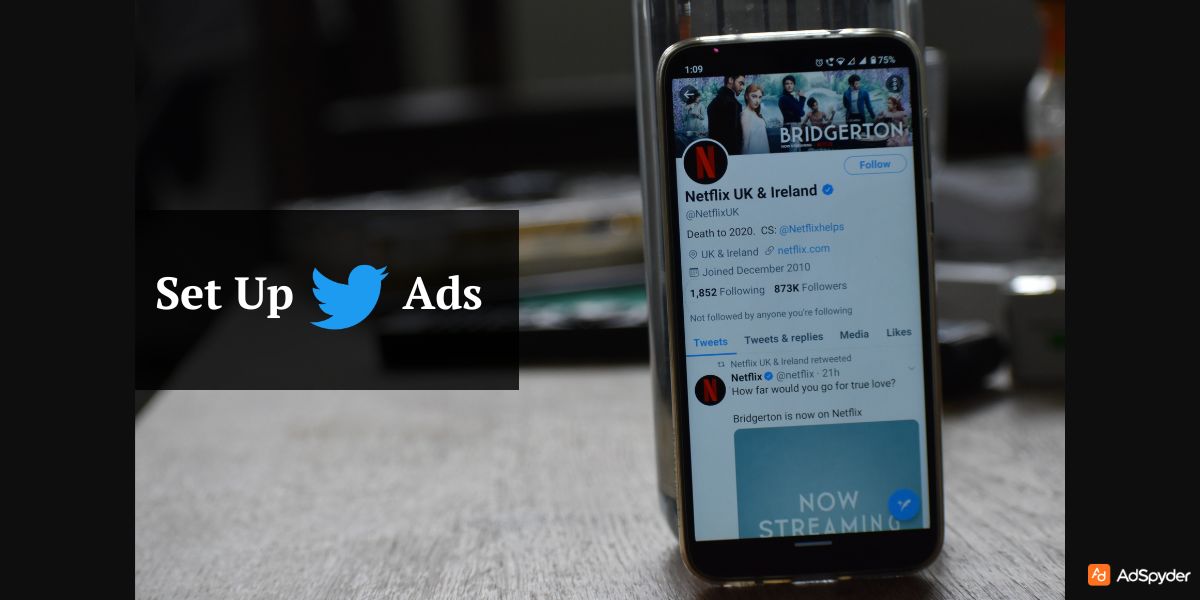This digital era is evolving more and more every day. Every few days you get to see something new that has arrived in this landscape that is useful to companies and influencers. The emergence of Public Relations hasn’t kicked out our traditional methods of press releases and media pitches, but we must agree that there was a need for something more. And digital PR has emerged as one such dominating force for industries. With the use of an infinite number of technologies and digital means available today, PR professionals are capable of effectively reaching their target audience, gaining brand awareness, building brand reputations, and eventually contributing to their client’s success. With this blog, we’re going to go into detail regarding the Digital Public Relations Marketing that is shaping the industry today.
Ready to Elevate your Marketing Strategy?
Summary: The Evolving Landscape of Digital PR
This new age of digitization has certainly revolutionized how we PR professionals can approach our craft. And in this blog, we’re going to go all into it. But before we do that, we’ll be giving you just a quick glimpse at all the pointers that we’ve covered here :
- Influencer marketing: Partner with relevant social-media influencers to reach your targeted audiences and build brand credibility.
- Data-driven PR: Leverage data analytics to measure your campaign performance, gain audience insights, and eventually make informed decisions.
- Content marketing: Create valuable content that educates, engages, and positions brands as thought leaders.
- AI and automation: Utilize technology to streamline your workflows, personalize outreach, and gain valuable audience data.
- Visual storytelling: Captivating audiences with engaging visuals like infographics and video content.
- Two-way communication: Prioritizing authentic conversations with your audience to build trust and relationships.
- Employee advocacy: Empowering your employees to become brand ambassadors and amplify brand messages.
- Crisis communication: Developing proactive strategies to manage negative situations and protect reputation.
By embracing all of these trends, you, too, as a PR professional, can develop some effective communication strategies that’ll help you resonate with your audience in this digital age and ultimately contribute to your client’s success.
The Rise of Influencer Marketing: Engaging Targeted Audiences

With this ongoing era of social media domination, consumers tend to trust recommendations given by people they perceive as authentic and knowledgeable. And this is where influencer marketing comes into play. When you partner with social media influencers who align with your brand values and target audience, you can utilize their reach and credibility to amplify your message and build brand awareness. Here is how influencer marketing has been transforming digital PR:
- Targeted Audience Reach: Influencers have established communities of followers who trust their opinions and recommendations. When you partner with the right influencers, it allows you to reach a highly targeted audience that is already interested in your niche or industry.
- Enhanced Brand Credibility: Consumers perceive endorsements from influencers as more authentic than traditional advertising. By partnering with a trusted influencer, you get to borrow their credibility and enhance your brand’s image.
- Engaging Content Creation: Many influencers excel at creating engaging and creative content that resonates with their audience. By collaborating with influencers, you can tap into their creative expertise and develop content that effectively captures attention and conveys your brand message.
- Increased Brand Awareness: Influencer marketing campaigns can significantly increase brand awareness, especially among targeted audiences. By leveraging the reach of influencers, you can get your brand in front of a wider audience and generate excitement around your products or services.
- Improved Brand Advocacy: Partnering with influencers can encourage them to become genuine advocates for your brand. When influencers consistently promote your products or services in a positive light, it can foster brand loyalty and trust among their followers.
However, it’s important to note that not all influencer marketing campaigns are created equal.
Tips To Maximize the Effectiveness of your Campaigns
- Identify the Right Influencers: Don’t solely focus on follower count. Choose influencers whose content aligns with your brand values and whose audience matches your target demographic.
- Develop Clear Campaign Goals: Determine your objectives before launching a campaign. Do you want to increase brand awareness, drive traffic to your website, or generate leads? Having clear goals guides your strategy and helps you measure success.
- Use Paid marketing strategies: Using paid media for promoting your PR can help your brand value. Make sure your ads are non-intrusive, so as to not hamper the user experience. Focus on native ads, that do this for you.
- Focus on Authenticity: Audiences can easily spot inauthentic promotions. Encourage influencers to create content that feels natural and aligns with their unique voice and style.
- Track and Measure Results: Monitor key metrics such as reach, engagement, and website traffic generated through the influencer marketing campaign. This data helps you evaluate the effectiveness of your campaign and refine your strategy for future efforts.
The Power of Data-Driven PR: Measuring and Refining
Traditionally, the effectiveness of PR campaigns was often measured through indirect metrics like media mentions and clippings. However, the digital age has ushered in an era of data-driven PR. By leveraging analytics tools and data insights, PR professionals can gain a deeper understanding of campaign performance, audience behavior, and what truly resonates with their target demographic.
Check Out: Press Release for Brand Promotion
How Data-Driven PR is Shaping the Industry
- Measuring Campaign Effectiveness: Data analytics allows PR professionals to track key metrics such as website traffic, social media engagement, and lead generation attributable to specific PR campaigns. This data provides valuable insights into what’s working and what’s not, enabling them to optimize future campaigns for maximum impact.
- Gaining Audience Insights: By analyzing data from various sources, PR professionals can gain a deeper understanding of their target audience. This includes demographics, interests, online behavior, and content preferences. These insights can inform content creation media outreach efforts, and overall communication approaches to better resonate with the target demographic. For example, if you are runnign a Facebook video ad, check out the insights provided by the Meta Ad Account for metrics like views, reach, likes, shares etc.
- Identifying Influencers: Social media analytics tools can help PR professionals identify influencers who are generating engagement and reaching relevant audiences. This data-driven approach ensures you partner with influencers who can deliver the most impact for your campaigns.
- Tracking Crisis Sentiment: In the event of a crisis, data analytics can be used to track sentiment and monitor online conversations about your brand. This real-time data allows for swift and strategic responses to mitigate reputational damage.
- Optimizing Content Performance: By analyzing data on content performance, PR professionals can understand what types of content resonate most with their audience. This data informs content strategy decisions and ensures resources are allocated toward creating high-performing content that engages the target demographic.
Implementing a data-driven approach to PR requires investment in the right tools and resources. However, the benefits far outweigh the costs. By leveraging data analytics, PR professionals can gain a competitive edge and deliver measurable results for their clients.
The Importance of Content Marketing: Building Trust and Engagement

Content marketing plays a pivotal role in digital PR. By creating high-quality content that informs, educates, and entertains your target audience, you can establish your brand as a thought leader in your industry and foster trust and engagement.
How Content Marketing is Transforming Digital PR
- Building Brand Authority: Creating valuable content positions your brand as an expert resource within your industry. This expertise establishes credibility and trust with potential customers, making them more likely to consider your products or services.
- Driving Organic Traffic: High-quality content optimized for search engines can attract organic traffic to your website. This increases brand awareness and generates leads that can be nurtured into paying customers.
- Enhancing Audience Engagement: Compelling content encourages audiences to interact with your brand. This could involve reading your blog posts, watching your videos, or participating in discussions on your social media channels. Increased engagement fosters stronger relationships with your target demographic.
- Supporting Earned Media Coverage: Compelling content can attract the attention of journalists and publications. By consistently creating newsworthy content, you increase the likelihood of securing earned media mentions, which further amplifies your brand message.
- Demonstrating Brand Values: Content marketing allows you to showcase your brand values and personality. By creating content that aligns with your core values, you can connect with audiences on an emotional level and build lasting relationships. This helps build the stages for brand affinity marketing.
Considerations for Effective Content Marketing
- Identify Content Themes: Develop content themes that are relevant to your target audience and align with your overall branding strategy. Consider topics that address their pain points, interests, and aspirations.
- Create Diverse Content Formats: Don’t limit yourself to blog posts. Explore a variety of content formats like infographics, videos, e-books, and webinars to cater to different learning preferences and engagement styles.
- Maintain Content Consistency: Regularly publish high-quality content to keep your audience engaged and coming back for more. Develop a content calendar to plan and schedule content creation in advance.
- Promote Your Content: Don’t just create content and hope people find it. Promote your content across various channels such as social media, email marketing, and paid advertising to maximize reach and engagement.
- Measure Content Performance: Track key metrics like website traffic, engagement rates, and lead generation attributable to your content marketing efforts. This data helps you understand what content resonates most with your audience and allows you to refine your strategy for continuous improvement.
The Integration of AI and Automation: Streamlining Workflows and Gaining Insights
The digital age has brought forth a wave of powerful artificial intelligence (AI) and automation tools that are transforming the way PR professionals work. By leveraging these technologies, PR teams can streamline workflows, personalize outreach, and gain valuable audience insights.
Here’s how AI and automation are impacting digital PR:
- Media Monitoring and Analysis: AI-powered tools can monitor vast amounts of online data in real-time, identifying relevant conversations, mentions, and sentiment around your brand. This analysis allows PR professionals to stay ahead of potential issues and proactively engage with audiences.
- Content Creation and Optimization: AI tools can assist with content creation by generating topic ideas, identifying trending keywords, and even suggesting writing styles that resonate with target audiences. Additionally, AI can help optimize content for search engines to improve organic visibility.
- Personalized Outreach and Targeting: AI can analyze data to identify the most relevant journalists, influencers, and thought leaders to target for outreach efforts. This personalization increases the likelihood of securing media placements and building strong relationships with key contacts.
- Social Media Listening and Engagement: AI can be used to monitor social media conversations and identify brand mentions in real-time. This allows PR professionals to respond to comments and questions promptly, fostering positive sentiment and building stronger relationships with audiences.
- Data-Driven Reporting and Insights: AI can analyze data from various sources to generate comprehensive reporting on the performance of PR campaigns. These insights enable PR teams to measure the impact of their efforts and make data-driven decisions for future campaigns.
While AI and automation offer tremendous benefits, it’s important to remember that they are tools, not replacements for human expertise. The role of PR professionals will continue to evolve as these technologies advance.
Related: Press Releases for SEO
The Shift to Visual Storytelling: Captivating Audiences in the Digital Age

In today’s fast-paced digital world, attention spans are shorter than ever. Consumers are bombarded with information from all directions. This is where visual storytelling comes into play. By utilizing engaging visual formats like infographics, videos, and live streams, PR professionals can capture attention, convey complex messages effectively, and leave a lasting impression on audiences.
Here’s how the shift to visual storytelling is shaping digital PR:
Enhanced Audience Engagement
- Visuals are processed faster than text. By incorporating images, videos, and infographics into your communication strategy, you can grab attention and keep audiences engaged with your content.
Improved Information Retention
- People are more likely to remember information presented visually than text alone. Visual storytelling helps audiences retain key messages and understand complex concepts more easily.
Increased Emotional Connection
- Visuals can evoke emotions and create a stronger connection with audiences. By using compelling imagery and video, you can resonate with audiences on a deeper level and build lasting brand affinity.
Accessibility and Shareability
- Visual content is often more easily shared across social media platforms than text-based content. This increases the reach of your message and the potential for organic discovery by new audiences.
Adaptability to Different Platforms
- Visual content can be adapted to different platforms and devices. For example, you can create short videos for social media stories, in-depth documentaries for YouTube, and eye-catching infographics for blog posts.
Tips for Incorporating Visual Storytelling into Digital PR Strategy
- Develop a Visual Identity: Establish a consistent visual style that aligns with your brand identity. This includes using specific colors, fonts, and imagery across all your visual content.
- Invest in High-Quality Visuals: Low-quality images and videos can actually detract from your message. Invest in creating high-quality visual content that is professional and engaging.
- Utilize Storytelling Techniques: Don’t just present information visually. Use storytelling techniques to capture attention and evoke emotions with your visuals.
- Optimize for Mobile Consumption: With the majority of internet traffic coming from mobile devices, ensure your visual content is optimized for viewing on smaller screens.
- Track and Analyze Performance: Monitor the performance of your visual content to see what resonates most with your audience. Use this data to refine your visual storytelling strategy for future campaigns.
Embracing Visual Storytelling in PR Campaigns
| Visual Format | Description | Public Relations Application |
| Infographics | Visual representation of data, statistics, or timelines | Simplifies complex messages and makes press releases more shareable |
| Short Videos | Brief, engaging clips tailored for social media platforms | Promotes brand stories, announcements, or event recaps |
| Behind-the-Scenes Content | Informal visuals showing internal culture or campaign development | Builds transparency and humanizes the brand |
| Branded Visuals | Logos, color palettes, and stylized templates aligned with brand identity | Ensures visual consistency across press materials and media assets |
| Animated Explainers | Motion graphics explaining processes or services | Great for pitching new products or campaign initiatives |
| Live Streams | Real-time broadcasting of events, launches, or interviews | Drives engagement, encourages audience interaction |
| Interactive Media | Scrollable timelines, clickable maps, or embedded polls | Encourages participation and deeper content engagement |
The Rise of Social Video Platforms in Digital PR
| Platform | Key Features | How It Supports PR Goals |
| YouTube | Long-form videos, SEO-friendly, high discoverability | Enables in-depth storytelling and educational brand content |
| Instagram Reels | Short-form vertical videos, high engagement, trending reach | Great for visual storytelling and real-time campaign updates |
| TikTok | Viral-friendly content, Gen Z-focused, trend-based algorithm | Amplifies brand visibility through creative, snackable videos |
| LinkedIn Video | Professional audience, thought leadership, native video sharing | Builds credibility and shares PR-driven announcements |
| Facebook Video | Wide audience base, autoplay in feed, live video options | Supports community engagement and live product/brand events |
| X (formerly Twitter) Video | Short, timely clips and updates | Shares real-time responses, press mentions, and brand messaging |
The Era of Two-Way Communication: Building Trust and Fostering Relationships
The days of one-way communication in PR are over. In the digital age, audiences expect authentic conversations with the brands they support. By prioritizing two-way communication, PR professionals can build trust, foster relationships, and create loyal brand advocates.
Here’s how the era of two-way communication is impacting digital PR:
Building Relationships with Audiences
- Traditional media outreach often involves a one-way transmission of information. Two-way communication encourages dialogues with audiences, allowing PR professionals to understand their needs and concerns better. This fosters stronger relationships and builds brand loyalty.
Enhanced Brand Transparency
- By engaging in open and honest conversations with audiences, brands can demonstrate transparency. This transparency builds trust and credibility, which are essential for building lasting relationships with consumers.
Identifying and Addressing Concerns
- Two-way communication allows PR professionals to identify potential issues and address concerns from audiences proactively. This swift response mitigates negative sentiment and demonstrates that the brand cares about its customers.
Generating User-Generated Content
- By encouraging audiences to participate in conversations and share their experiences, PR professionals can generate valuable user-generated content. This authentic content can be more powerful than traditional marketing messages and helps build brand trust.
Creating a Community Around Your Brand
- Two-way communication fosters a sense of community around your brand. When audiences feel heard and valued, they are more likely to become loyal brand advocates who promote your products or services to others.
Tips for Prioritizing Two-Way Communication in Digital PR Strategy
- Be Active on Social Media: Social media platforms provide excellent opportunities for engaging in two-way conversations with audiences. Respond to comments and messages promptly, and participate in relevant conversations.
- Host Online Events: Webinars, live streams, and Q&A sessions are great ways to connect with audiences in real time. These interactive events encourage participation and build stronger relationships.
- Encourage Customer Reviews and Feedback: Customer reviews and feedback provide valuable insights and demonstrate that you care about your audience’s opinions. Actively solicit feedback and respond to reviews in a timely and professional manner.
- Embrace Transparency: Be open and honest in your communications. If you make a mistake, acknowledge it and explain how you plan to fix it. Transparency builds trust and loyalty in the long run.
- Empower Your Employees as Brand Ambassadors: Your employees are valuable assets when it comes to two-way communication. Empower them to participate in online conversations and share their experiences with your brand. This authentic advocacy can be extremely powerful.
The Focus on Employee Advocacy: Building Brand Credibility from Within
In today’s connected world, consumers are increasingly receptive to information shared by people they trust and know. This is where employee advocacy comes into play. By empowering employees to become brand ambassadors, PR professionals can leverage the authentic voice of their workforce to build brand credibility and reach new audiences.
How Employee Advocacy is Shaping Digital PR:
- Enhanced Brand Authenticity: Consumers often perceive messages from employees as more authentic than traditional marketing materials. Employee advocacy allows you to showcase your brand culture and values through the voices of your own people. This authenticity resonates with audiences and builds trust.
- Increased Brand Reach: Employees have their own social media networks and professional connections. By encouraging them to share brand content and messages, you can extend your reach to new audiences that may not have been exposed to your brand otherwise.
- Improved Employer Branding: Employee advocacy programs can boost your employer brand. When employees are proud to represent their company publicly, it sends a positive message to potential candidates and helps attract top talent.
- Stronger Employee Engagement: Employee advocacy programs can increase employee engagement and satisfaction. When employees feel valued and empowered to share their voice, they are more likely to be proud brand ambassadors and advocates for the company.
- Valuable Employee Insights: Employee advocacy programs can provide valuable insights into your brand perception. By monitoring what content employees choose to share and the feedback they receive, you can gain a better understanding of how your brand is perceived by the public.
Tips for Developing a Successful Employee Advocacy Program
- Develop a Clear Program Structure: Outline the goals and guidelines of your employee advocacy program. This includes what types of content employees can share and the platforms they can use.
- Provide Training and Resources: Equip employees with the knowledge and resources they need to be effective brand ambassadors. This may include training on social media best practices and brand messaging.
- Make it Easy to Participate: Provide employees with easy-to-share content and tools to simplify participation in the program. This can include pre-written social media posts, branded hashtags, and content calendars.
- Recognize and Reward Participation: Acknowledge and reward employees who actively participate in the program. This shows your appreciation for their efforts and encourages continued engagement.
- Measure and Analyze Results: Track the performance of your employee advocacy program. Monitor metrics such as reach, engagement, and website traffic driven by employee sharing activity. Use this data to refine your program and maximize its impact.
Related: Analyzing Successful Press Release Examples in Various Industries
The Growing Importance of Crisis Communication: Proactive Strategies for Reputation Management

The digital age has made it easier than ever for negative information to spread quickly and widely. This is why crisis communication has become increasingly important for PR professionals. By developing proactive crisis communication plans, PR teams can mitigate reputational damage and navigate negative situations effectively.
Here’s how the growing importance of crisis communication is shaping Digital Public Relations Marketing:
Proactive Planning and Preparation
- The best way to manage a crisis is to be prepared for one in the first place. PR professionals should develop crisis communication plans that outline roles, responsibilities, and communication protocols in case of a negative event.
Rapid Response and Transparency
- In the event of a crisis, it’s crucial to respond quickly and transparently. Delaying communication can fuel speculation and worsen the situation. Be open and honest in your communications, even if you don’t have all the answers.
Social Media Monitoring and Engagement
- Social media plays a major role in crisis communication. PR professionals need to monitor social media conversations closely to identify emerging issues and address concerns from the public.
Building Trust Through Empathy:
- During a crisis, it’s important to demonstrate empathy and understanding for those affected. Acknowledge the severity of the situation and express your commitment to resolving the issue.
Leveraging Employee Advocacy:
- Employees can be powerful assets during a crisis. By keeping employees informed and encouraging them to share positive messages about the company’s response efforts, you can help to rebuild trust and mitigate reputational damage.
Here are some tips for developing a proactive crisis communication plan:
- Identify Potential Crisis Scenarios: Brainstorm potential crisis scenarios that could impact your company. This could include product recalls, data security breaches, or negative publicity.
- Develop Clear Communication Protocols: Establish clear communication protocols for responding to a crisis. This includes who will be the spokesperson, what messages will be communicated, and how information will be disseminated.
- Designate a Crisis Communication Team: Assemble a crisis communication team composed of key representatives from various departments within the company. This team will be responsible for developing and implementing the crisis communication plan.
- Practice Makes Perfect: Conduct regular crisis communication drills to ensure your team is prepared to respond effectively in a real-world situation.
- Continuously Monitor and Update: The digital landscape is constantly evolving. It’s important to continuously monitor emerging trends and update your crisis communication plan accordingly.
Explore Now: Nvidia Press Release
By embracing the strategies outlined in this blog post, professionals can thrive in the dynamic world of Digital Public Relations Marketing. Remember, the key to success lies in building authentic relationships, prioritizing transparency, and leveraging the power of data and new technologies. By doing so, PR professionals can effectively manage brand reputation, drive business growth, and secure a competitive edge in the digital age.
FAQs
By analyzing data from various sources, you can gain insights into your target audience’s demographics, interests, online behavior, and content preferences.
AI can analyze data to identify relevant influencers who are generating engagement and reaching your target audience.
Be active on social media platforms, respond to comments and messages promptly, and participate in relevant conversations.
Visuals are processed faster than text, and infographics and videos can help capture attention, improve information retention, and create a stronger emotional connection with your audience.
Track key metrics like website traffic, engagement rates, and lead generation attributable to your content marketing efforts. This data helps you understand what content resonates most with your audience.
Outline a clear program structure, provide training and resources for employees, make participation easy, recognize and reward employee contributions, and track and analyze program result.
Strong communication skills, analytical thinking, creativity, adaptability, and a willingness to embrace new technologies are all crucial for success in digital PR.
Conclusion
The world of Digital Public Relations Marketing is constantly evolving. By embracing data-driven approaches, compelling content creation, the power of AI and automation, and the importance of two-way communication, PR professionals can build strong relationships, manage brand reputation effectively, and drive business growth in the digital age.
Remember, successful digital PR is all about building authentic connections with your target audience and demonstrating the value your brand brings to the table. The strategies outlined in this blog post provide a solid foundation for PR professionals to thrive in the ever-changing digital landscape.




